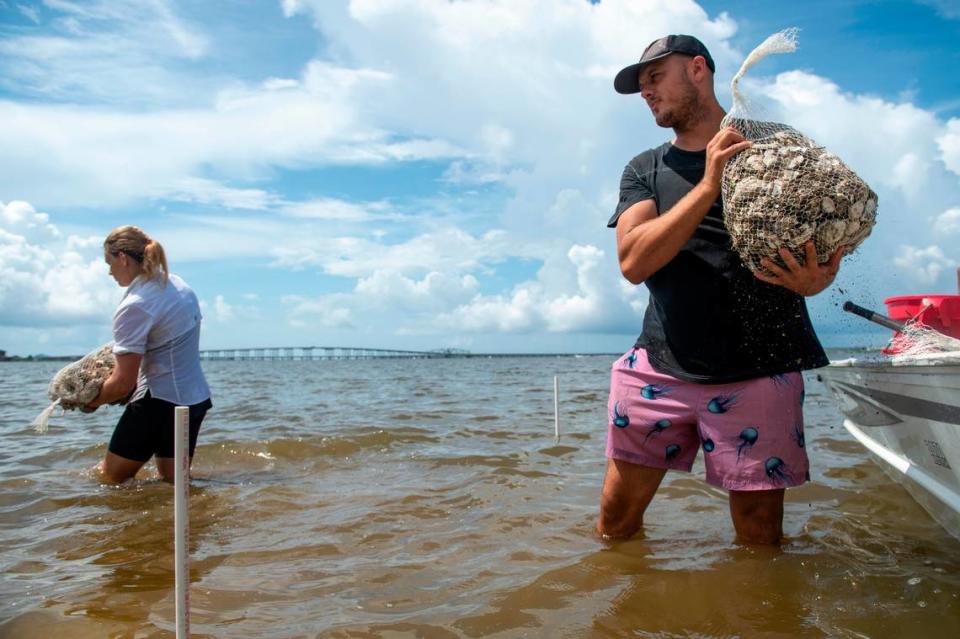On a peninsula in the Back Bay of Biloxi, waves lap onto a barren stretch of shoreline, rotten remains of trees rising from the sand. Here, erosion has eaten away at the marsh, and only a few oysters remain where they once thrived.
Tuesday, Virginia Schweiss, a University of Southern Mississippi lecturer of marine conservation, laid a bag filled with oyster shells a few yards offshore. 18,000 pounds of shells later, Schweiss and her students have laid the foundation for a “living shoreline,” a piece of a wider effort to restore the health of the Mississippi Sound.
Living shorelines are a method of stabilizing shorelines while providing the benefits of a natural shoreline. Schweiss, chief scientist of the Callie Mae Sea Foundation, said that in other parts of the country, living shorelines have substantially improved local fisheries.
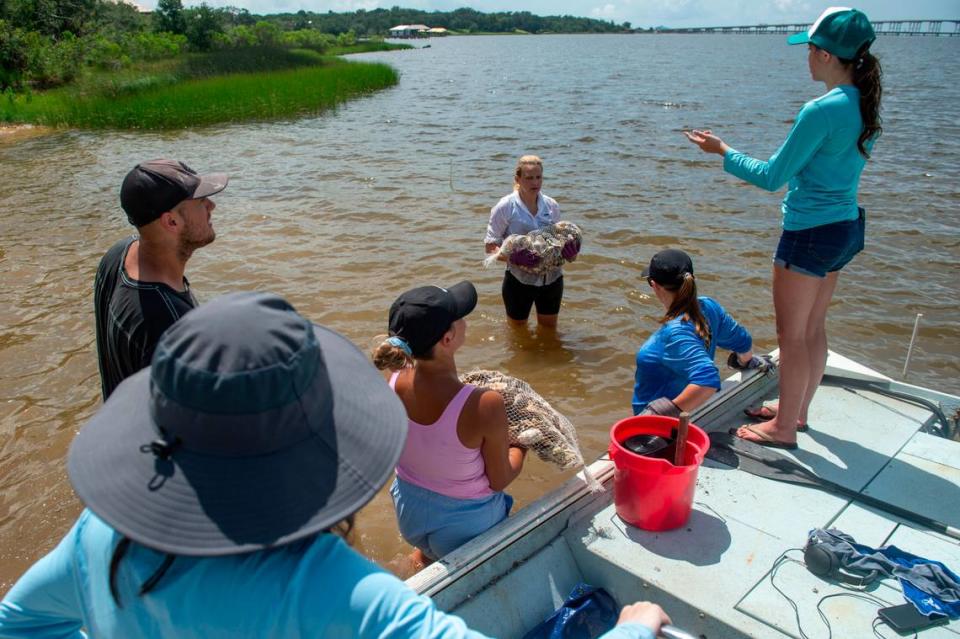

“It’s going to provide a lot of ecosystem benefits. All of our juvenile fish species that are important for recreational and commercial fisheries – they love marsh grass, it’s a nice hiding habitat for them; there’s a lot of food. By creating more of that habitat, we’re benefiting the fisheries,” Schweiss said. “And then also, we’re hoping this becomes an oyster reef because we’re seeding it with live diploids that will hopefully spawn and start that first generation of oysters out here. In years to come, I think it’ll benefit the oyster fishery as well.”
The project is part of USM’s Gulf Coast Research Summer Field Program, which allows undergraduate students from across the country the chancto gain course credit while getting experience in marine research. One of nine students helping with the project, USM senior marine biology major Ryleigh Sprague, prefers taking the hands-on approach to improving Gulf Coast ecosystems.
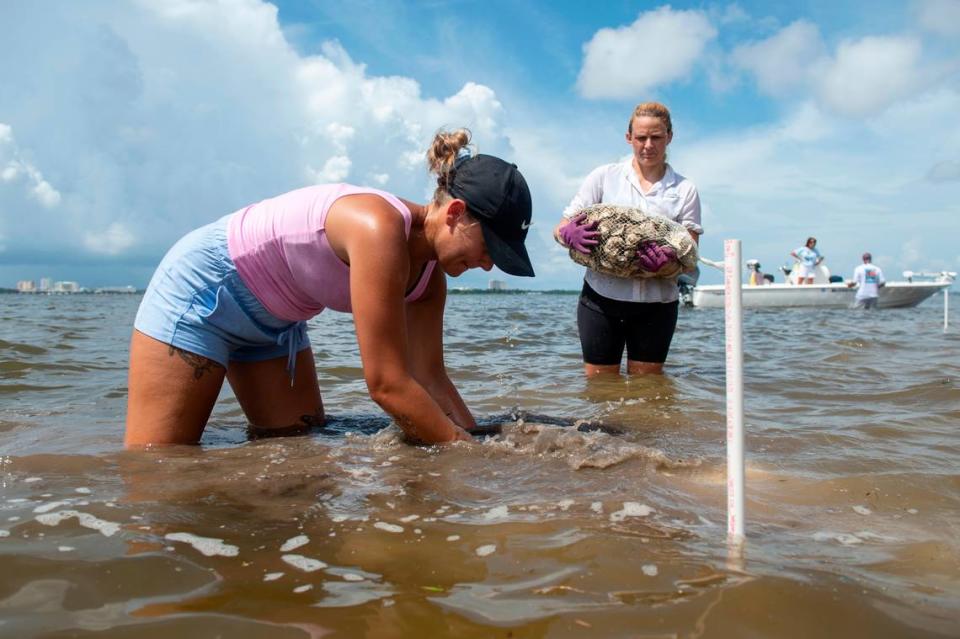

“We came out here and did a survey before, and we found a couple pieces of wood, two-by-fours and rocks and stuff with oysters on them, but it was only a couple. Hopefully, by doing this we’ll see more of them,” Sprague said. “… I’ve lived here since second grade, and seeing firsthand the effects of erosion and climate change has really opened my eyes. I’m really happy to be out here to help conserve what we have already.”
If their efforts are successful, vegetation will return, providing bird, fish and shrimp habitat. The natural oyster reef will begin to filter detritus from local waters while providing habitat for crab and fish species. The site will be monitored and possibly expanded in the coming years. According to Schweiss, none of it would have been possible without the help of the surrounding community.
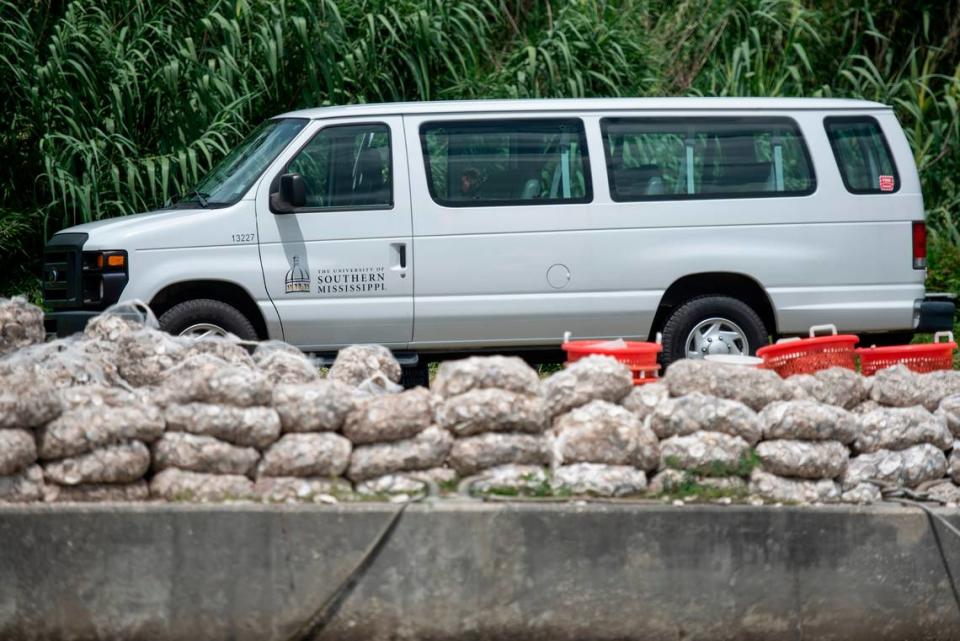

A coastal community
In May, Schwiess was connected to Greg and Cecilia Cenac of C. Cenac & Co. and French Hermit Oyster Co., two community members committed to restoring Gulf Coast oyster reefs. Through the Cenacs’ local connections and Schweiss’ determination, the project quickly became a reality.
“I think that is probably one of the most amazing things about South Mississippi. I don’t think this would have happened in any other area. Because all it takes is a couple of phone calls and ‘Hey, will you help with this?’ and people are willing to drop things and help you out whenever they can. It’s such an amazing community,” Schweiss said.
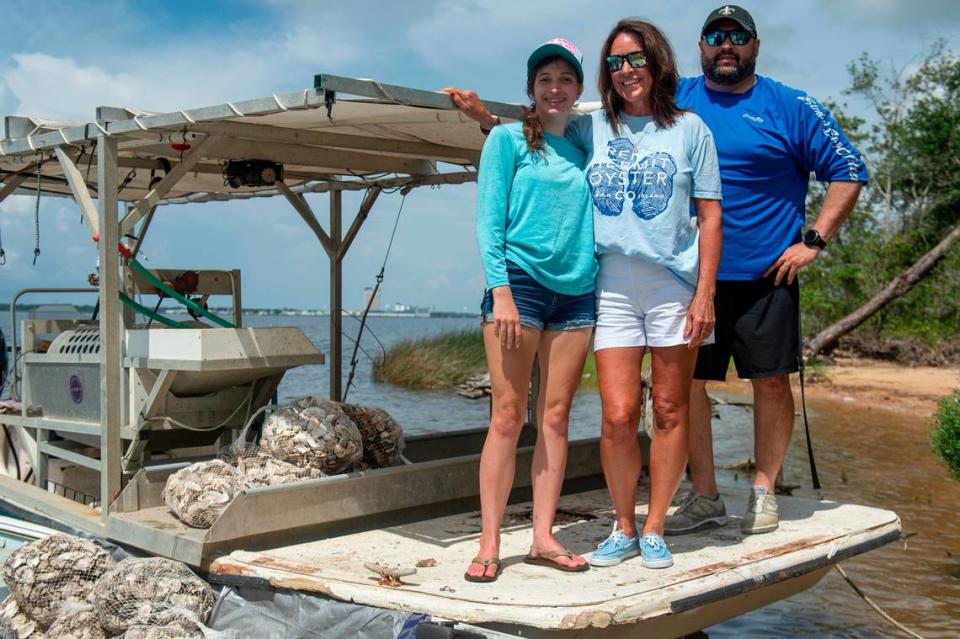

“These people volunteered – look at this,” Greg Cenac said, gesturing toward work skiffs donated for the day by locals. The Nature Conservancy Save Our Shells Program, a new program formed to conserve shells and support such projects on the Mississippi Gulf Coast, sourced and helped transport the shells donated by MGM in Las Vegas.
The Cenacs donated new, specially designed reef bags, which will biodegrade slower in warm Gulf waters to better allow the oyster reef to take hold. Local oyster farmers donated the diploids that will produce the reef’s first generation of oysters.
A decline in water quality in recent decades has devastated the Mississippi Gulf Coast oyster industry.
“Everybody’s trying to bring back the oyster industry after the Bonnie Carre Spillway, Horizon, Katrina – there’s just a lot of effort and a lot of people who really want to see it come back,” Cecelia Cenac said.
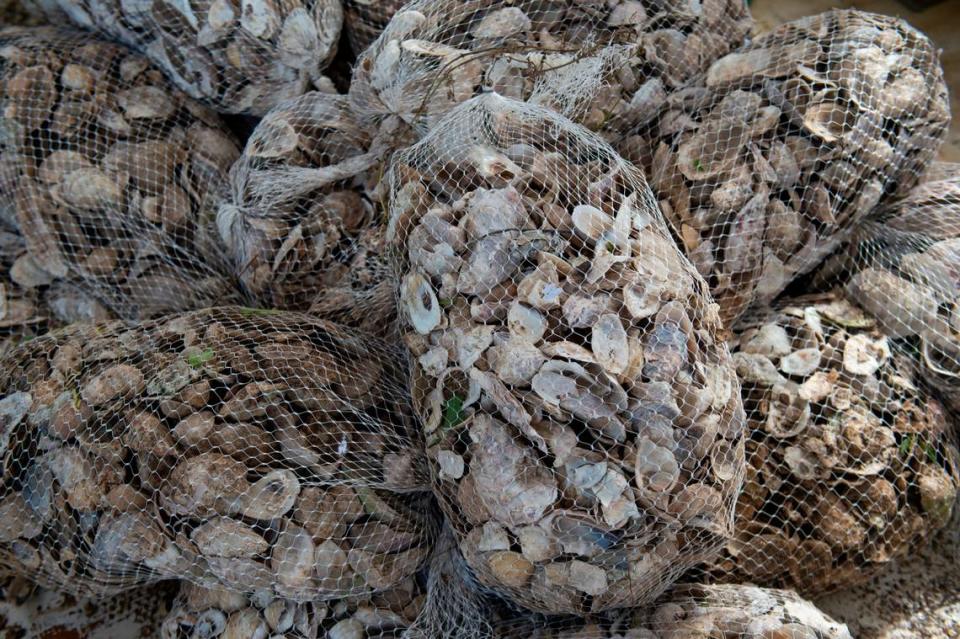

An expanding solution
A little further offshore from the peninsula, the remains of a concrete wall, or bulkhead, lie hidden under the waves. Bulkheads are a traditional approach to preventing erosion using hardened surfaces like concrete and wood to shelter shorelines from wave energy.
“And as you can see, it didn’t last through Hurricane Katrina. In Florida, when Hurricane Ivan came through, there were a lot of areas that had hard bulkheads, and the hurricane broke most of them. Whereas, they had some living shorelines that had been placed out by the Nature Conservancy and those remained in place. So not only are the living shoreline lines providing more ecosystem benefits, but they’re also helping for when that next hurricane inevitably comes through,” Schweiss said.
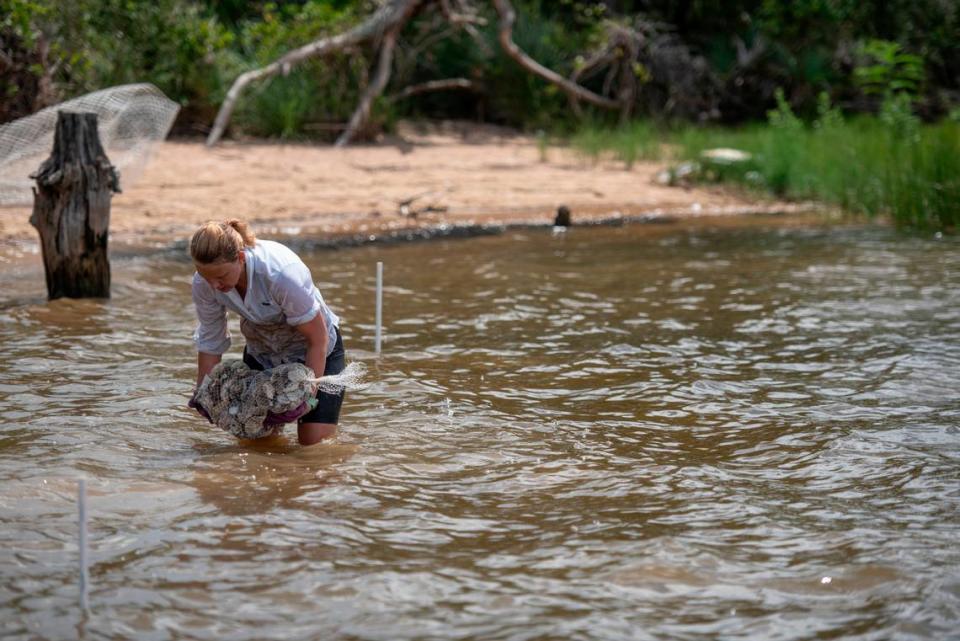

Eric Sparks, director of coastal and marine extension at Mississippi State University, helped Schweiss learn to design an effective living shoreline and has contributed to many living shoreline projects on the Gulf Coast. He said that living shorelines are an aesthetically pleasing and environmentally friendly alternative to bulkheads. In addition to providing wildlife habitat, living shorelines pull carbon dioxide from our atmosphere and sequester it in vegetation.
Sparks said the Living Shoreline Technical Assistance Program, a joint effort by MSU and the Mississippi-Alabama Sea Grant Consortium, received 10 requests for free technical assistance from landowners in 2019. This year, they’ve received more than one hundred requests for assistance across Mississippi, Alabama and Florida.
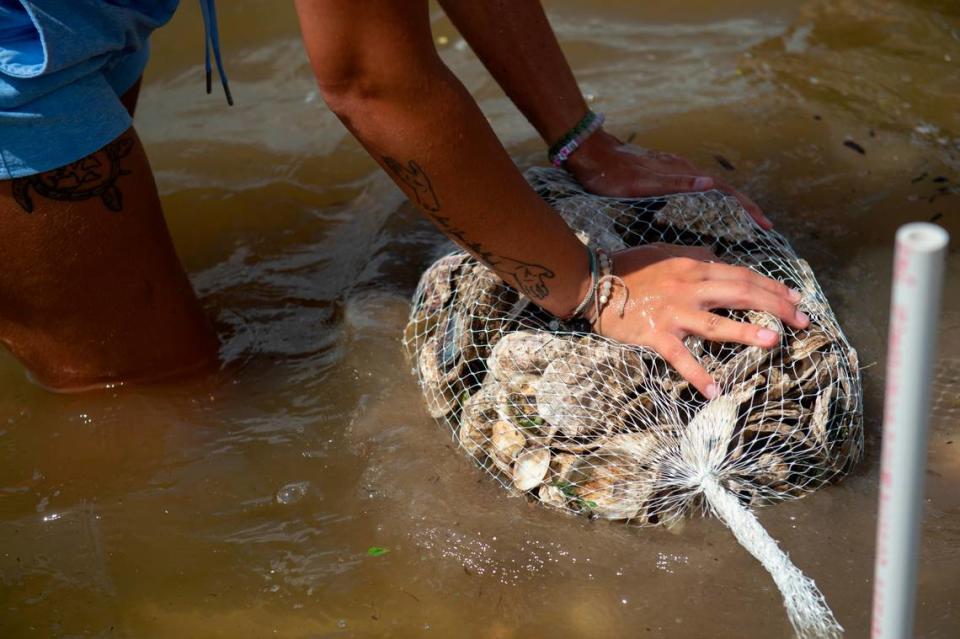

“People are realizing more and more the benefits of living shoreline projects, especially as compared to bulkheads and sea walls, like more hardened structures. In general, those projects are cheaper and require a lot less maintenance,” Sparks said. “… After a storm comes through, often you have to replace a bulkhead or repair it, whereas, with most living shoreline projects, you can’t even tell anything happened. And then you get on the environmental side of things – the more shoreline habitats we have, the more water filtration, nutrient and pollution removal capacity we have because plants are really good at removing a lot of things we don’t want in the water.”
The permitting process to create living shorelines in Mississippi was on hold for two years and has recently reopened. Sparks said that landowners interested in creating a living shoreline could contact the Living Shoreline Technical Assistance Program, which currently offers financial assistance to interested private property owners.
